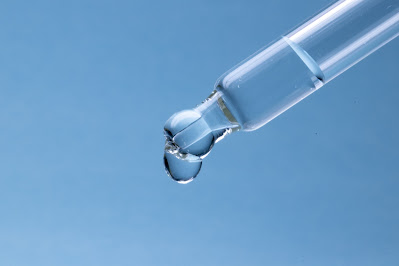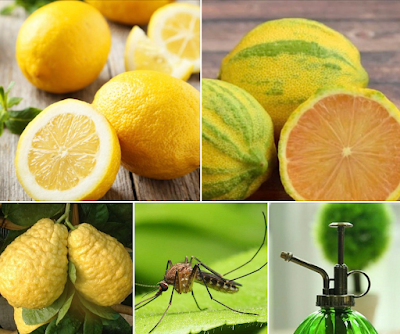Fish in Dog Food, Cat Food – the Good, and the Bad
Fish in dog food, cat food – the good, and the bad. Do you know what makes fish or a fish by-product healthy, or unhealthy for your dog or cat? There are many pet foods and treats that contain fish – but not all of the fish used in these products is truly health supporting.
Fish can offer many health benefits as a rich source of
protein, vitamins, minerals and essential fatty acids. Consuming fish on a
regular basis can contribute to optimal brain health, digestive health, heart
health, joint health and more. Regular consumption of fish can help prevent
arthritis, cancer, dementia, renal problems, and many other inflammatory
diseases. The essential omega 3 fatty acids in fish can play a significant role
in the maintenance of good psychological health, and can help speed healing. Conversely,
poor-source fish, and fish-based products can contribute to the acquisition of ailments and serious diseases.
Fish is a very popular ingredient in commercial pet food –
dry food, canned food, and raw food. If you are feeding your dog or cat a food
that contains fish, or fish by products such as fish meal or fish oil, I recommend that you take a few minutes to review the source and type
of fish in your dog’s food. The same holds true if you are giving your dog homemade
food that includes fish.
Don’t allow your decision on what fish-included product to
purchase to be influenced by 1persuasive advertising tactics, 2pet
store staff advice, a breeder’s advice, your 3veterinarian’s advice,
4price-point or popularity. At worst, your pet’s health can be adversely
impacted. It is always best to make your decision from a place of informed
knowledge…
Fish in Dog Food and Cat Food – the 'Good'
Deep, Cold, Open Water
Deep, cold, open water – for example the Atlantic Ocean, the
waters off of the Alaskan coast, and the Norwegian coast are less contaminated
than other bodies of water. Fish that live in these cold deep waters have a
high body-fat content rich in EPA and DHA omega-3 fatty acids and the lowest
levels of contaminants. If you want your dog or cat to consume fish for the
amazing health benefits offered by high-levels of omega-3 fatty acids look for
product that contain only wild or wild caught, cold water fish.
The Species of Fish Matters
The species of fish that offer the highest levels of omega-3
fatty acids are: salmon, albacore tuna, mackerel, lake trout, Alaskan halibut,
sardines, and herring. If you are feeding your dog fish because your dog has
allergies to red meat and poultry – consider using several types of fish to get
the best nutritional profile possible – i.e. look for a combination that yields the highest level of protein plus
the highest level of omega-3 fatty acids. Wild-caught from clean
water salmon, snapper fish, swordfish and tuna offer the highest levels of protein.
The fish offering the best omega-3 fatty acids are wild or wild-caught from clean
water salmon, sardines, lake trout,
swordfish, halibut (Alaskan), herring (Atlantic and Pacific), and mackerel.
In making a selection, you should also consider mercury
contamination…
Mercury Contamination
It is important to select fish that is relatively low in
mercury contamination. Cold water wild or wild-caught fatty fish, not
currently endangered from over-fishing and lowest in mercury are: Arctic char,
crawfish, herring, Pacific flounder, Pacific sole, tilapia (low in Omega 3,
high in omega 6), wild Alaskan Salmon, wild Pacific salmon. The highest mercury
contamination for wild and wild caught fish occurs in: Atlantic halibut, golden
snapper, king mackerel, marlin, pike, sea bass, shark, swordfish, and tuna
(albacore). Fish from the high-mercury contaminated category should not be
consumed more than one time per week. Pregnant and lactating dogs and cats, puppies
and kittens should not be fed any high mercury contaminated fish.
Persistent Organic Pollutants (POPs)
The wild and wild caught fish lowest in POPs is Wild Alaskan
Salmon and California salmon. POPs are pollutants that exist in the environment
which bioaccumulate in the body of humans and non-human animals. POPs are toxic
substances that pose extreme health hazards to humans, animals and the
environment. PCB’s and DDT are two examples of POPs. You can read more about
POPs here.
Whole Fish
Whole fish from clean, cold open waters offers the best
quality, low-contaminant nutrition and are preferable to farm-raised
whole fish or fish meal – both of which contain toxic contaminants.
Fish in Dog Food and Cat Food – the 'Bad'
Farm Raised Fish
Many dog food products contain fish, and fish derivatives
(i.e. fish meal or fish oil) sourced from farm raised fish. Consumption of
farm-raised fish increases your dog’s and cat’s toxic load, and while this may not result in short-term health
issues, it can result in multiple long-term health issues including a long-list
of 5inflammatory diseases. I recommend that you take a few minutes
to read about the multiple inflammatory agents that your dog or cat may consume
when eating a product that contains farm raised fish.
Fish Meal
Fish meal was at one time exclusively a by-product of the
fishing industry, and up until the early 1900’s was used mainly as a fertilizer
for farmer’s fields. Today, there are three basic categories of fish meal – fish
meal made from fish caught specifically to make fish meal; fish meal made from
the by-catches of another fishery; and fish meal made from the leftovers (undesirable
offcuts and offal) of made-for human consumption fish products. Fish meal is
used by both the pet food industry and animal feed industry. Fish meal can
offer concentrated protein, but it can also be a dangerous source of toxins. Fish meal is also used to feed farm raised fish, and in the preparation of certain antibiotics. The quality of a fish
meal depends on many factors such as the source of the fish (i.e. is the fish
meal made from farm-raised fish or from cold, clean water wild or wild caught
fish, or from wild or wild-caught fish in contaminated waters). The fish used in the making of fish meal tend to go rancid quickly - in order to prevent rancidity from occurring some producers
of fish meal use toxic and inflammatory chemical preservatives such as ethoxyquin, sodium nitrite and sodium nitrite with formaldehyde. If you are feeding your
dog or cat a product that contains fish meal do your research and make sure
that the fish meal used is ethoxyquin-free. I recommend that you read more
about -ethoxyquin here.
High heat cooking of meat-protein (including fish) creates a chemical reaction
in which carcinogens are formed. Most fish meal is made by cooking, pressing,
drying and grinding the fish. This means that most fish meal is highly
processed at the fish meal plant even before it gets to the pet food
manufacturing plant where it may be cooked again at least once if not a third
time during the dry food or wet food manufacturing process. For this reason, fish meal is not a substance
that I am pleased to see in any pet food.
Often Used in Pet Food BUT are Low in Omega 3 and High in Contaminants
A few examples, used by the pet food industry because they
are readily available and inexpensive…
Basa (also known as catfish or pangasius). Catfish is typically
farm raised or imported from contaminated waters of Vietnam. Talapia is typically farm raised. It is low in Omega 3 fatty
acids. It is a ‘vegetarian’ fish (a fish that does not eat meat) which makes it
less expensive for the fish farms to feed. Farmed Talapia is typically fed soy
and corn pellets sourced from GMO corn and soy. GMO
corn and GMO
soy is high in herbicide residue; GMO corn has been proven to cause the
growth of tumors – making farm raised tilapia an even more undesirable fish in
my opinion.
Canned Fish
Metal cans and can
lining material contains toxens
(i.e. PCBs) that do leach into food preserved in the can. For this
reason I
do not recommend feeding your dog or cat canned food on a daily basis.
In addition, most canned fish is cooked at high temperatures prior
to canning. High heat cooking triggers the formation of carcinogens in
the food.
For this reason, feeding your dog or cat canned fish on a daily basis is
not something
I recommend you do. Using canned fish infrequently presents a much lower risk to health.
The bottom line - fish can be very good for your dog or cat, but not if the fish is contaminated with multiple toxins!
The bottom line - fish can be very good for your dog or cat, but not if the fish is contaminated with multiple toxins!
1 For example: the use of trendy words on
packaging and in promotional videos, commercials (i.e. ‘omega-fatty acids
included’, ‘supports coat and skin health’, ‘hypo allergenic dog food rich in
omega 3’, ‘all natural’, ‘holistic’, etc.); packaging has attractive photos
(i.e. a healthy, happy dog, fresh, appetizing looking food ingredients), etc.
All of these things are marketing gimmicks designed to leave plenty of room for
‘interpretation’ by you the consumer and by the product manufacturer. If you
assume you do not look at the obvious and underlying details. The pet food
industry takes great advantage of the consumer’s gap in knowledge to assure
large profit often at the expense of your dog’s health.
2The majority of pet food store employees get
their diet and nutrition ‘training’ from the same pet food manufacturers, whose
product is for sale in their place of employment – the pet food store. The
opinion you are getting from the staff person is typically not based on
objective thought or fact.
3The typical veterinarian spends one week only
in a four year veterinary sciences course studying food and nutrition for pets.
In that one week of study on food and nutrition, typically 80% to 100% of the
course material and media is supplied by the big pet food manufacturers. In
addition, during the 4 year course the same pet food manufacturers provide ‘for
free’, pet products to the students for their own personal pets. After
graduating from the veterinary sciences course, the student may open their own
veterinary practice, or become a partner at an already establish veterinarian
hospital, where the same manufacturer’s pet food will be sold – both parties
(veterinarian and manufacturer) making a tidy profit from sales. The same is
true for most veterinarian hospital in-house animal nutritionists.
Unfortunately in the majority of cases, this situation is not one that fosters
broad-perspective knowledge-based objectivity regarding diet, food and
nutrition.
4The cost of a product is not an indication of
the actual appropriateness and quality of a product and its ingredients. While
it is true that very inexpensive products are often poor quality, many high-priced
products contain listed and hidden problematic ingredients as well.
5Inflammatory diseases – for example:
arthritis, asthma and other allergic symptoms, autoimmune diseases, colitis,
Crohn’s disease, dementia, inflammatory bowel disease and other gastrointestinal diseases, thyroid problems and multiple types of cancer.
Holistic Diet, Nutrition, Wellness Services Tailored to Your Individual Dog and Cat
For information about my holistic diet, nutrition, wellness services visit my:
Maintain good health | Address acute and chronic health issues | Pre and post surgery support and recovery
My holistic wellness services are available worldwide via video consultation.
🌎 USA | Canada | UK | Europe | Australia | New Zealand | Asia | South and Central America | Africa | UAE
📱 FaceTime | Facebook | Skype | WhatsApp
Holistic Behavioral Services For Your Dog
For information about my holistic behavioral services visit my:
For dogs of all ages, sizes and breeds
My holistic behavioral services are available locally in-person and worldwide via video session.
🌎 USA | Canada | UK | Europe | Australia | New Zealand | Asia | South and Central America | Africa | UAE
📱 FaceTime | Facebook | Skype | WhatsApp
Affiliations to Companies
✓ None.
✓ I don't sell food or supplements.
✓ I'm not aligned with any companies.
✓ None.
✓ I don't sell food or supplements.
✓ I'm not aligned with any companies.
Article and graphics by Karen Rosenfeld










